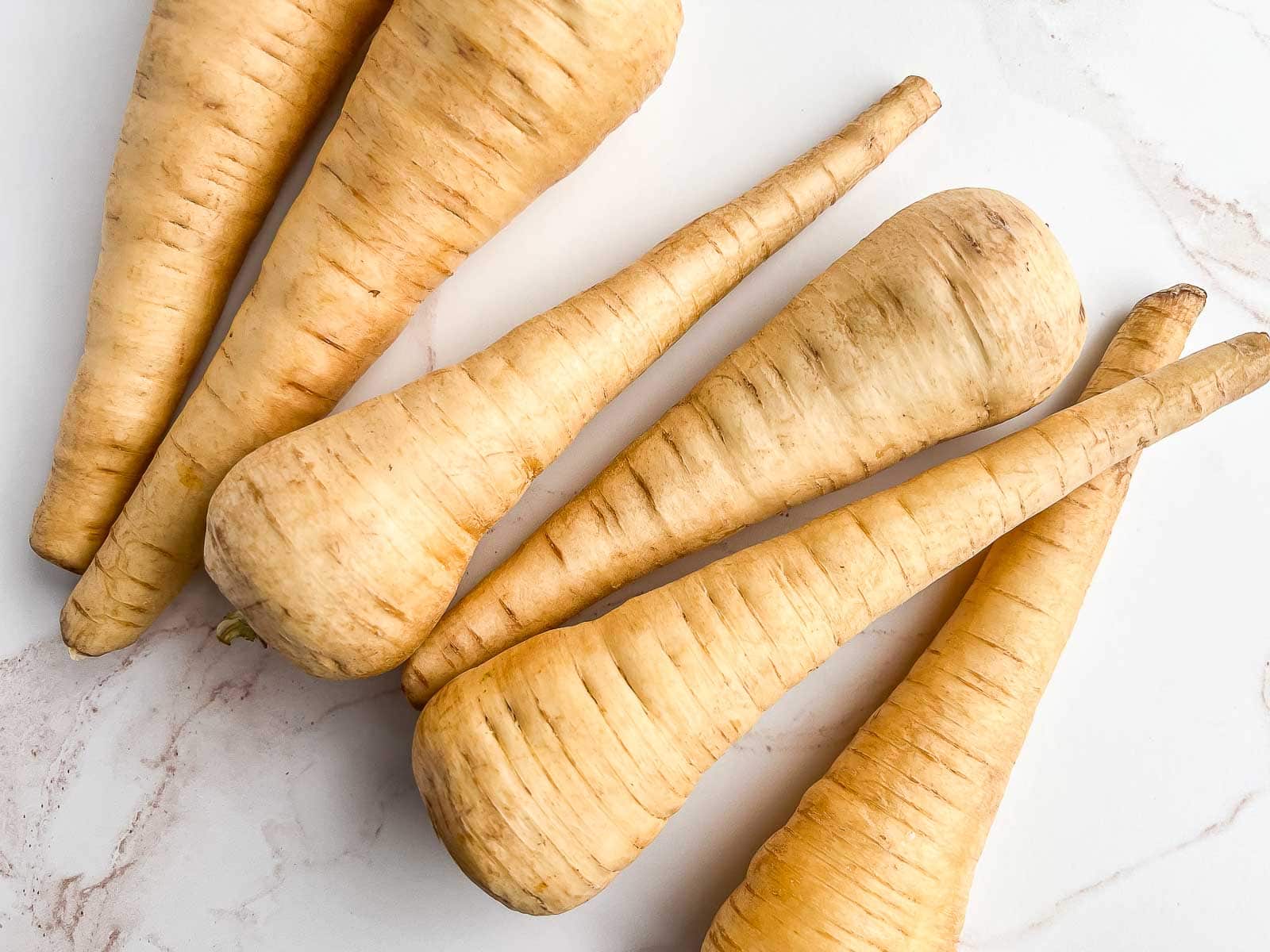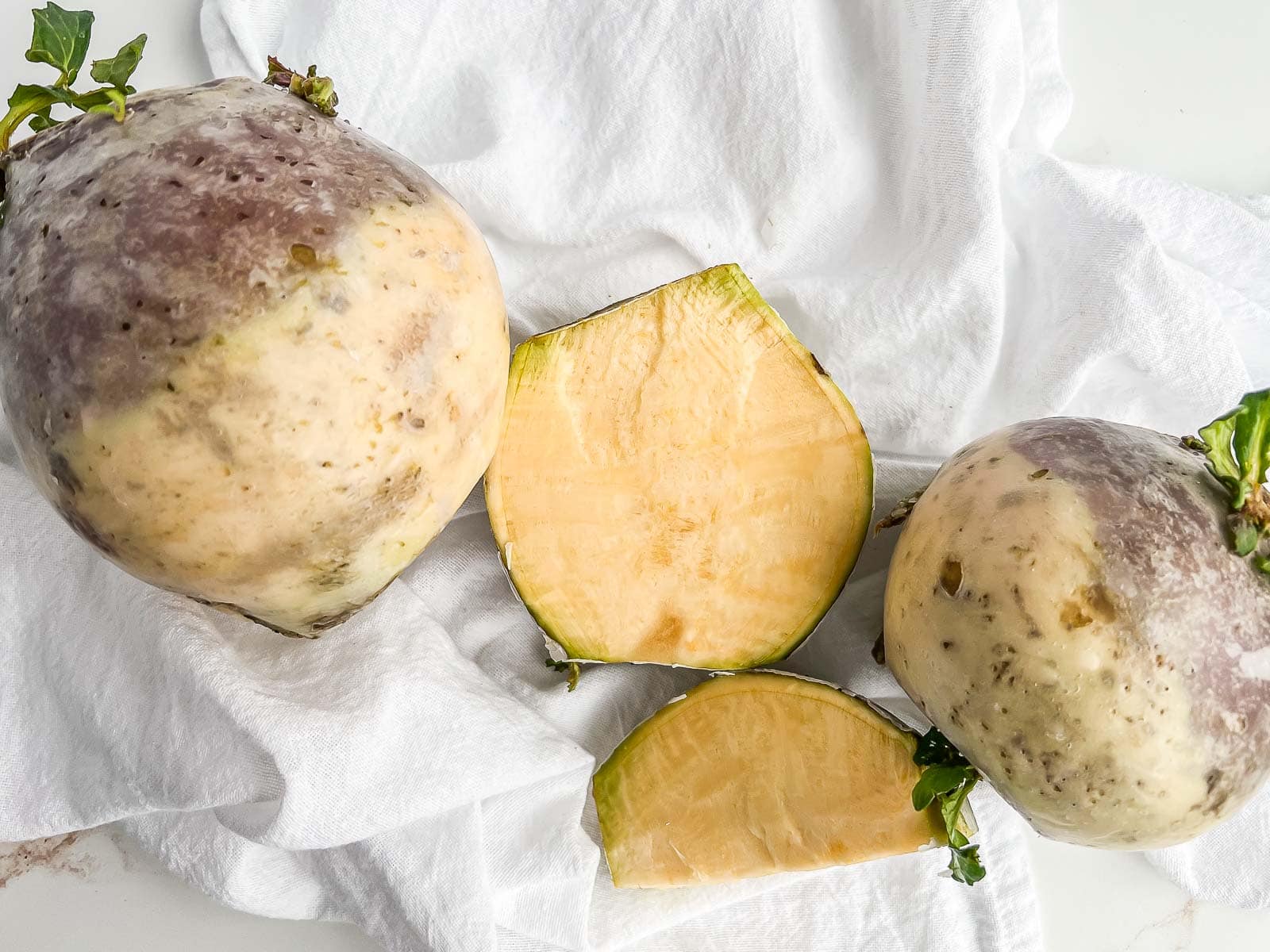Carrots are a classic ingredient in coleslaw, adding a touch of sweetness and crunch. However, if you’re looking for a substitute, there are several options that can provide a similar texture and flavor.
Best Carrot Substitutes for Coleslaw
-
Parsnips: Parsnips are a root vegetable that closely resembles carrots in appearance and taste. They have a slightly sweeter and spicier flavor than carrots, making them a good choice for coleslaw.
-
Sweet Potatoes: Sweet potatoes are another root vegetable that can be used as a carrot substitute. They have a sweeter flavor than carrots and a denser texture.
-
Winter Squash: Winter squash, such as butternut squash or acorn squash, can be roasted or steamed and added to coleslaw for a sweet and savory flavor.
-
Rutabaga: Rutabaga is a root vegetable that has a slightly bitter taste. It can be grated or chopped and added to coleslaw for a unique flavor.
-
Daikon Radish: Daikon radish is a large, white radish that has a mild flavor. It can be grated or sliced and added to coleslaw for a crunchy texture.
-
Bell Peppers: Bell peppers add a slightly sweet flavor and a vibrant color to coleslaw. They can be chopped or sliced and added to the mix.
-
Zucchini: Zucchini is a summer squash that can be grated or chopped and added to coleslaw. It has a mild flavor and a slightly watery texture.
-
Celery Root: Celery root has a similar flavor to celery, but it is a root vegetable. It can be grated or chopped and added to coleslaw for a crunchy texture.
-
Parsley Root: Parsley root has a similar flavor to parsley, but it is a root vegetable. It can be grated or chopped and added to coleslaw for a fresh flavor.
-
Jicama: Jicama is a root vegetable that has a slightly sweet and nutty flavor. It can be grated or chopped and added to coleslaw for a crunchy texture.
-
Cucumber: Cucumber adds a refreshing flavor and a crunchy texture to coleslaw. It can be chopped or sliced and added to the mix.
Tips for Substituting Carrots in Coleslaw
-
When substituting carrots in coleslaw, it is important to consider the texture and flavor of the substitute. Some substitutes, such as parsnips and sweet potatoes, have a similar texture to carrots, while others, such as bell peppers and zucchini, have a different texture.
-
The flavor of the substitute should also be taken into account. Some substitutes, such as parsnips and sweet potatoes, have a sweeter flavor than carrots, while others, such as rutabaga and daikon radish, have a more bitter flavor.
-
When using a substitute that has a different texture or flavor than carrots, it may be necessary to adjust the other ingredients in the coleslaw recipe. For example, if using a sweeter substitute, it may be necessary to reduce the amount of sugar in the dressing.
There are many different vegetables that can be used as a substitute for carrots in coleslaw. The best substitute will depend on the desired texture and flavor. With a little experimentation, it is possible to find a substitute that will create a delicious and satisfying coleslaw.
Best Carrot Substitutes by Common Use
Already have a recipe in mind? These are my suggestions, arranged according to purpose, to assist you in selecting the ideal replacement for your dish.
These carrot-looking roasted veggies are actually
For baking, try grated parsnips, rutabaga, or zucchini. If using zucchini, squeeze out some water. All of these substitutes can be found in spice cakes that resemble carrot cake, so the outcome will be comparable. Though I wouldn’t blame you for sticking with an oldie but goodie, take this as a sign to try a new recipe created especially for one of these carrot alternatives if you want to branch out from your tried-and-true carrot cake!
Common Uses For Carrots

Likely originating from Persia (now the region of Afghanistan and Iran) as early as the 1st century, the use of carrots expanded across East Asia and West Europe by the 18th century. As such, carrots are a traditional ingredient in a variety of recipes around the world. Their natural sweetness makes them a great addition to savory and sweet dishes alike. Carrots are often paired with aromatics such as garlic and onion as a base for curries, stews, soups, and broths.
Additionally, pickled or raw carrots are served as a novel garnish or side dish. Carrots can also be roasted, stir-fried, and glazed to enhance their slightly sweet flavor and soften their texture. Naturally, the classic carrot cake exemplifies how versatile this well-liked root vegetable is.
After talking about the flavor, nutritional value, and typical ways to prepare carrots, let’s look at some alternatives. Although it is usually best to substitute by weight, if you don’t usually weigh your ingredients, I also provide some other guidelines.

One reason parsnips are a great alternative to carrots is that if you were to hold up a parsnip and a carrot together, you might be inclined to call parsnips white carrots. Parsnips and carrots are closely related, so they have similar appearances, textures, nutrient profiles, and mild tastes. Parsnips do, however, also have a distinct flavor that has been described as spicy, peppery, or licorice-like. Because of this, they complement savory or sweet dishes with lots of warm spices better to balance the slightly stronger flavor. Substitute 1 medium parsnip for 1-2 medium carrots.
Orange, mildly sweet, and also packed with vitamin A, sweet potatoes make a great substitute for carrots. The significant difference between carrots and sweet potatoes lies in the starch content. Sweet potatoes have about six times as much starch as carrots. Sweet potatoes can be an excellent choice for soups, curries, baking, and roasting. However, I would select a different option if you want a low-carb carrot substitute. Substitute 1 medium sweet potato for 3-4 medium carrots.
If substituting more than one carrot, winter squash, especially butternut squash, may be the best option. Carrots and butternut squash have comparable nutrient profiles, tastes, and textures. They can be used to make soups, stews, curries, roasts, stir-fries, and even baked goods that taste just like carrots. Although they are difficult to disassemble, you can frequently buy pre-cut One butternut squash can replace up to 8 medium carrots. However, smaller, sweeter types, like honeynut squash, can substitute a few carrots!

Turnips and rutabaga, two root vegetables, can be a good substitute for carrots, especially when cooked to bring out their sweeter flavors. Both of these vegetables, which are related to cabbage, have a somewhat bitter flavor; turnips have a slightly sharper and more bitter flavor. Your best bet between the two is rutabaga because they are milder and slightly sweeter. Nonetheless, in dishes with an earthy flavor profile, like soups or sheet pan roasts, both vegetables can work well. A rutabaga can replace roughly three medium carrots, while a turnip can replace about two.
Keep in mind that daikon radishes are different from red radishes in that they are larger, white in color, and have a milder flavor. In slaws, salads, and stir-fries, daikon can be a great substitute for carrots due to their crisp texture and milder taste. Daikon radishes are popular in East Asian cuisine, so substituting them for carrots in recipes from this area can make a lot of sense. Substitute about 1 medium daikon radish for 1 medium carrot.
Bell peppers share a lightly sweet flavor and high water content with carrots, though they can also have a bit of a vegetal flavor. They can also share an orange color, making them a wonderful substitute when the color is vital to your dish. Additionally, bell pepper can function as an aromatic, as demonstrated with the Spanish sofrito and Cajun holy trinity, which serve as the flavorful base in many delicious recipes. Substitute 1 medium bell pepper for 1 carrot. Green bell peppers will have a more vegetal flavor, with the sweetest peppers being red.
Grated zucchini, another popular vegetable for baking, can yield a similar result in your baked goods. On the other hand, zucchini contains slightly less sugar and more water. Because of this, think about changing your recipe to include a little bit more sugar and squeeze the grated zucchini to get rid of some of its water content before mixing it into your batter. Steer clear of large zucchini because they differ from carrots in that they often have thicker skin, mushier centers, and larger seeds. One small zucchini can replace about 2 medium carrots.
The Best Homemade Creamy Coleslaw Ready in 3 minutes! How to make classic coleslaw salad like kfc |
FAQ
Does coleslaw contain carrots?
What can I add to store bought coleslaw to make it taste better?
Can you substitute cabbage & carrots for coleslaw?
The cabbage will soften over time and the dressing will become runnier. The carrots and red cabbage will also alter the color of the dressing the longer it sits. Pre-shredded bagged coleslaw mix: If you’re in a time crunch, substitute the cabbage and carrot blend with two 16-ounce bags of store-bought coleslaw mix.
What is good substitute for collard greens?
Collard greens are easily substituted by a variety of greens. My favorite leafy green is kale, and it makes a good substitute for collard greens. Kale has a similar taste and texture to collard greens making kale a great sub. Spinach can also be a good substitute for collard greens but keep in mind that it will cook more quickly than kale or collard greens. Another option is cabbage, typically cabbage is inexpensive, and it can be used in many ways, my favorite use is coleslaw, but it can also be used in cooked preparations too.
What vegetables do you use for coleslaw?
The veggies for our coleslaw are cabbage, carrots, and fresh parsley. I love using a combination of red and green cabbage when I make coleslaw. It makes the dish really pretty. You can use just one variety. Try green cabbage, red cabbage, savoy cabbage, or Napa cabbage.
How do you make coleslaw with carrots?
Shred the carrots using a box grater or a food processor that’s been fitted with a grating blade. Add the veggies to a large mixing bowl. Step 2: Make the coleslaw dressing. Whisk together the dressing ingredients in a separate bowl. Step 3: Assemble the coleslaw. Pour the dressing over the cabbage mixture and toss to coat evenly.
